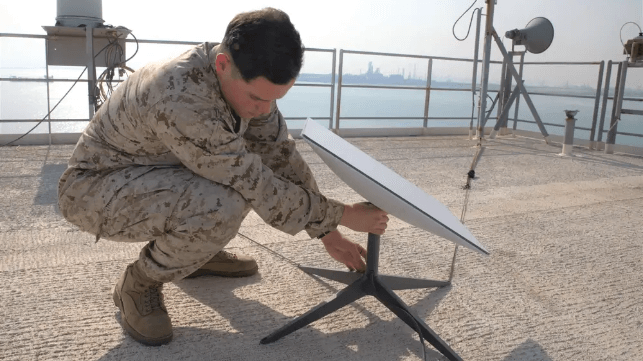U.S. Navy is Rolling Out High Speed LEO Internet Across the Fleet

Cruise ship and cargo vessel operators have been rapidly adopting Starlink internet access for business uses, "big data" applications and shipboard morale, with broad approval from crewmembers. The U.S. Navy has taken note and is preparing to follow suit, thanks to a program dubbed Sailor Edge Afloat and Ashore (SEA2) and an early experiment aboard the carrier USS Abraham Lincoln.
In some ways, warships present an ideal application for low earth orbit satellite internet. They are highly complex and digitized, and they stand to benefit from the potential to move large amounts of data in a short amount of time, with low latency. Their large crew complements spend months deployed, far from home, and maintaining morale is another high priority.
For decades, these vessels have relied on VSAT terminals connected to half a dozen satellites in geostationary orbit, with higher latency and lower bandwidth. The sailors on USS Abraham Lincoln have been the first to try out something new under way, thanks to combat systems officer Cmdr. Keven White, who made it a priority to install connections for Starlink and OneWeb LEO services on board as soon as possible.
To get to a usable, certifiable solution, Naval Information Warfare Systems Command (NAVWAR) needed satellites with laser crosslink capability to route data traffic from satellite to satellite to reach a fixed downlink location. It also needed a mobility code so a ship’s terminal could stay connected while under way.
With these technical hurdles resolved, NAVWAR got SEA2 a cybersecurity approval, allowing the Navy-managed service to operate for all nonclassified purposes across the fleet. (All previous commercial solutions for crew internet were ad-hoc and not formally approved.)
"It will be a leap forward in quality of service afloat for both quality of life and work. The sky, or even better space, is the limit to what can and will be done with this capability once we get it into the hands of our warfighters," said Rob Wolborsky, chief engineer at NAVWAR.
Wolborsky and retired NAVWAR commander Rear Adm. Doug Small cleared the paperwork out of the way to let sailors begin using Starlink and OneWeb in a hurry.
"I’m underscoring the monumental value Mr. Wolborsky provided by giving us access to resources that enabled a path to achieve our cybersecurity authority to operate," said White. "Normally, such a process takes years, but with his help, roadblocks to achieve a hardened system were cleared in a matter of months."
Cmdr. White began testing the high-speed service options aboard USS Abraham Lincoln in February, and the connection is now "entirely up and running," with reportedly profound improvements for sailor morale and productivity.
"We want to escape the mindset that SEA2 is only for tactical use. Right now, it’s all about getting the best out of our sailors by keeping them connected to home in a way they’re used to and giving them the tools to do their jobs more effectively,” said White.
Lincoln's crew will be sharing this privilege with the rest of the fleet soon, as SEA2 is now "on the cusp of being available on every Navy ship," according to NAVWAR.
